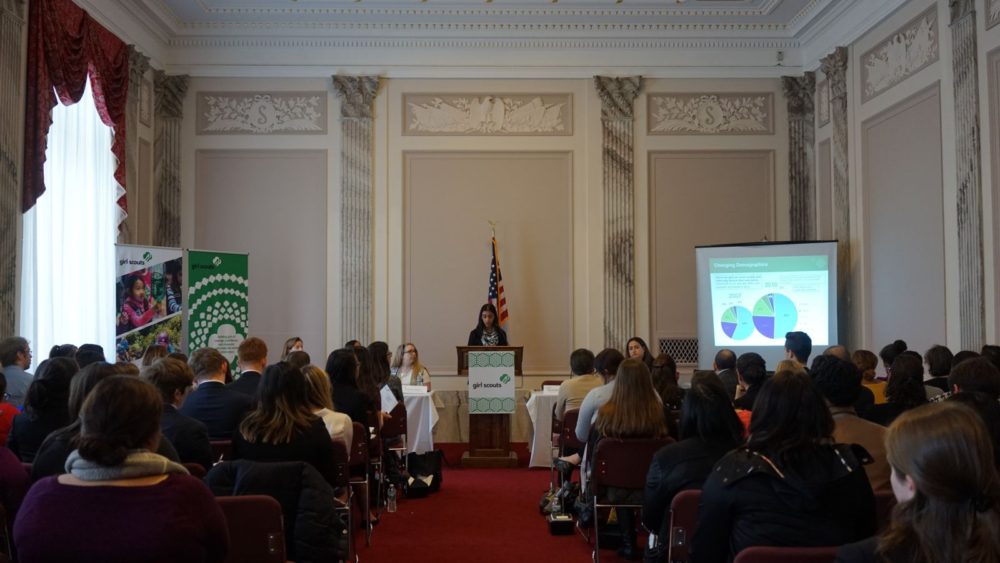 |
| The Girl Scout Research Institute released “The State of Girls 2017” at a February briefing on Capitol Hill. |
Since the Great Recession, the United States has experienced many demographic, social, economic, and technological changes. A new report from the Girl Scout Research Institute, “The State of Girls 2017: Emerging Truths and Troubling Trends,” tracks resulting trends in girls’ economic, physical, and emotional health, as well as participation in extracurricular activities and education compared to results from ten years ago.
To launch the report, Girl Scouts of the USA partnered with Honorary Congressional Host Committee members Senators Shelley Moore Capito (R-W.Va.), Susan Collins (R-Maine), and Jeanne Shaheen (D-N.H.), to host a briefing on Capitol Hill with speakers including Alice Hockenbury, Girl Scouts Vice President of Public Policy and Advocacy; Kamla Modi, Ph.D., Senior Researcher for the Girl Scout Research Institute; Makaa Ngwa-Suh, Program Services Manager for Girl Scouts of the Nation’s Capital; Rachel Tabakman, Girl Scouts Public Policy Manager; and Summer Berry, Girl Scout Ambassador from Martinsburg, West Virginia.
At the briefing, speakers discussed the results of the report, how the information provided can be used to influence policy, what Girl Scouts are doing with their STEM Education programming, and how their programming is helping girls. The “State of Girls” report series is the first of its kind to focus on the health and well-being of girls, and while some of the findings suggest positive trends for girls now, other results show that more needs to be done to help girls reach their full potential.
Troubling trends
According to the report, more girls today are living in poverty and low-income households than in 2007, and more than half of black/African American (58 percent), Hispanic/Latina (61 percent), and American Indian (61 percent) girls are considered low-income. This is especially important considering that girls who live in poverty and low-income households face many challenges that affect their physical and emotional health, as well as their opportunities for academic achievement.
Furthermore, all girls are more at risk for obesity (17 percent) and suicidal ideation (23 percent of high school girls) than they were a decade ago (16 percent and 19 percent, respectively).
Positive shifts
Overall, girls are engaging in less risky behaviors than in 2007, with fewer girls having tried cigarettes and alcohol. Additionally, reading and math proficiency has improved. Finally, the high school dropout rate has decreased in recent years, with the largest decrease for Hispanic/Latina girls, for whom the dropout rate dropped from 18 percent to 9 percent.
Useful resources
“The State of Girls 2017” focuses on national data, but for a closer look at the state of girls in your community, the Girl Scouts Research Institute has also published The United States of Girls, an interactive map illustrating your state’s performance on the Index of Girls’ Well-Being as well as what Girl Scouts are doing within your state to advocate for girls. The results from this report are not prescriptive, and do not dictate what the future may hold for girls in the United States. Programs that operate in out-of-school time, like Girl Scouts and afterschool programs, currently and will continue to play an important role in supporting girls nationally.
Interested in learning more about The State of Girls? Read the full report, and for more discussion, join the Afterschool Alliance, lead researchers from the Girl Scout Research Institute, and speakers from Girl Scouts of Northeast Texas and Girls on the Run International for a webinar on February 23 at 1 p.m. ET to discuss the results and talk about what is being done to help girls thrive.

Comments are closed.